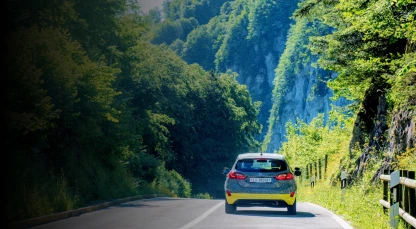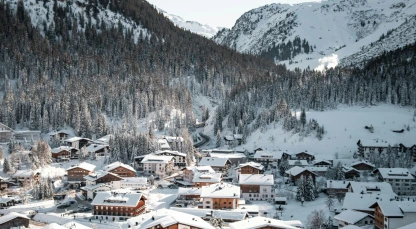Due to maintenance orders placed after 11 PM CEST will not be processed until the next day at 4 AM. If you travel before 4 AM we recommend to buy a physical sticker.
Great St. Bernard Tunnel
If you are planning on using the tunnel, you’ll find a wealth of useful information in the article below. In it, we tell you where it can be found and how it can benefit your travel in the region. Also included is information about tolls, regulations and procedures when using the tunnel, and other information you will need to know.
Overview and Geographical Significance of the Great St. Bernard Tunnel
The Great St Bernard Tunnel (sometimes referred to as the Grand St Bernard Tunnel), linking Switzerland and Italy, is nestled beneath the majestic Alps, connecting Martigny in Switzerland with Aosta in Italy. Serving as a crucial passageway on the E27 European route, this tunnel plays a vital role in fostering economic and cultural exchanges between the Swiss Valais region and the Italian Aosta Valley. Its strategic location facilitates efficient transit for both tourists and commercial traffic, bolstering bilateral relations between these neighboring nations. Unlike most tunnels in Switzerland, there is a toll payable. Live news updates on road tunnel safety and conditions are available online.
Image (Map) to be created! Location of tunnel and roads to/from
Image File name: Map Great St Bernard Tunnel.webp
Image Title: Detailed Map Great St Bernard Tunnel
Great St. Bernard Tunnel Tolls
In addition to the toll payable for use of the tunnel, drivers who use the Swiss motorway network are also obliged to buy a Swiss vignette. Check prior to travel whether the route linking you to the tunnel's north end (Swiss tunnel entrance) attracts toll fees. This will spare you possible delays further down the road. "Remember, that if your chosen route to the Great St Bernard Tunnel comprises toll roads, you will need to pay for both an e-vignette and passage through the tunnel."
Elevation and Length of the Great St. Bernard Tunnel
Here are some interesting facts about the tunnel:
| Length | 5 854 m |
| Highest Elevation - Northern end | 1 918 m (6,293 ft) above sea level |
| Elevation - Southern end | 1 875 m (6,152 ft) above sea level |
| Number of Tubes | 2 (Traffic x 1, Service x 1) |
| Number of Lanes | 2 (Bi-directional) |
| *Typical Travel Time @ 80 km/h | 3.75 minutes |
*Remember, that total travel time will depend on traffic volume, weather conditions on the connecting road, and time taken to clear formalities at the Swiss/Italian border post.
Terms of Use & Restrictions When Using the Grand San Bernard Tunnel
Road users planning on passing through the tunnel should be aware of the following:
- Be in possession of a valid driver's licence for the vehicle driven.
- Obey the regulations of the Swiss road network.
- Adhere to any special regulations regarding the class of vehicle driven and load in transit.
- There are specific conditions which permit the transportation of dangerous goods through the tunnel. Ensure you have the necessary permission, should you wish to carry such goods through the tunnel.
- Be aware of the possible risks driving in tunnels and mountainous terrain. During winter, winter tyres are a definite requirement.
- Observe the 80 km/h speed limit.
IN CASE OF EMERGENCY:
- Ambulance: 144
- Police: 117
- Firefighters: 118
- Universal European emergency number: 112
- Swiss traffic information service (TCS) - +41 800 140 140
You can request Roadside Assistance in Switzerland using the following numbers:
- Emergency Call / Vehicle Breakdown Services: 140
- TCS Touring Club Switzerland - Toll free number: 0800 808 114
- TCS Touring Club Switzerland - International number: +41 58 8276316
Great St. Bernard Tunnel Current & Live Webcam
The tunnel runs operations throughout the year, 24 hours a day. In some case, particularly during winter, access to the tunnel entrance may be impossible due to snowfall. For this reason, it is advisable to check Great St Bernard Tunnel weather prior to travel. For a visual impression of traffic and weather conditions, use the Great St Bernard Tunnel webcam.
Are there alternative routes to the Great St. Bernard Tunnel?
The Great St Bernard Pass remains the most comparable alternative route to the tunnel. Please note that the pass is often inaccessible in winter due to snowfall. Consider other popular alpine crossing routes on the Swiss side, such as the Gotthard Tunnel and Simplon Pass. That said, the tunnel often has the least holiday season congestion to most relevant city destinations.
Great St. Bernard Tunnel FAQ:
- 45° 51' 5" N 7° 9' 41.60" E
- 45° 53' 59.31" N 7° 11' 37.27" E




